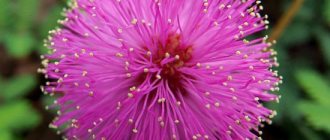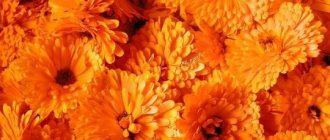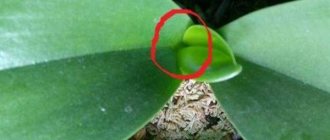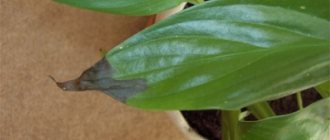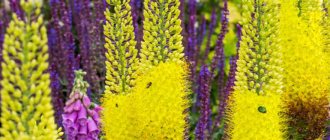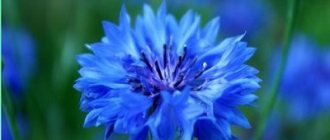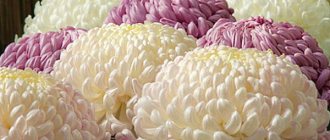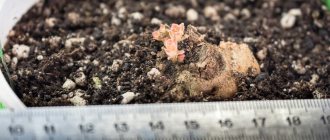Step-by-step instructions for growing gloxinia from seeds
Gloxinia from seeds at home grows no worse than adult plants that are sold in flower shops.
But one of the main problems is that not all seeds usually germinate. How to prepare the soil for planting
The first thing to do is select the soil. Seeds can be sown in ready-made soil mixture, or you can prepare it yourself.
The right soil for gloxinia:
- earth (it is best if it is collected from an area under a birch or pine tree);
- peat soil;
- fine drainage (expanded clay or small pebbles are suitable)
Mix all ingredients to obtain a homogeneous mass. Pour drainage into the bottom of the container, and then fill with soil. Before planting the planting material, the soil is calcined in the microwave or oven for 1 hour. Thanks to this measure, all harmful microorganisms will be destroyed. Instead of the usual substrate, you can grow seedlings in peat tablets.
Advice! To make the soil more nutritious, you need to add a little wood ash to the soil mixture.
Step by step landing procedure
The most important part of growing gloxinia at home is sowing the seeds. Before gloxinia is planted with seeds, the soil is sprayed with a spray bottle. It should be a little damp.
Sowing seeds
Then the seeds are scattered on the surface. You can sprinkle them with a thin layer of soil. The main condition is that the planting material cannot be buried.
Important! Cover the containers with cling film or glass and put them in a warm, sunny place. The glass must be removed regularly to allow the soil to breathe.
If you don’t do this, the soil will begin to become moldy, and then nothing will grow. As the soil dries, water it with warm, settled water. When the first sprouts appear, the glass is immediately removed. If you do not remove it and leave the container in the sun, the sprouts will get burned and die immediately
The glass must be removed regularly to allow the soil to breathe. If you don’t do this, the soil will begin to become moldy, and then nothing will grow. As the soil dries, water it with warm, settled water. When the first sprouts appear, the glass is immediately removed. If you do not remove it and leave the container in the sun, the sprouts will get burned and die immediately.
Sprouts should appear 14-90 days after sowing. If more than three months have passed and the seeds have not yet hatched, then the planting material has been spoiled and nothing will sprout.
Watering rules and humidity
When growing gloxinia at home, special attention should be paid to humidity and watering. Frequent overdrying of the soil, as well as its constant waterlogging, negatively affects seedlings
It either may not rise at all, or will quickly die.
In order to properly grow seedlings, you must always monitor the soil. As soon as it dries, you need to water it again, but do not allow it to become waterlogged. It is enough that the top layer of the substrate is moistened.
What do seedlings look like?
Fertilizing and soil quality
In order for the flower to bloom, gloxinia seedlings are regularly fed. The first time fertilizing is done after the third picking. You can fertilize with Kemira Lux. 1 tbsp. l. Dilute fertilizers in 2 liters of warm water. You can also use the preparations Baikal-1M, Stimovit, Energen as a top dressing.
There is no need to feed the seedlings until the last picking, since fresh nutrient soil is used for replanting.
Important! Seedlings need to be watered every 10 days. Gloxinia is picky about the composition and quality of the soil.
Loose, oxygen-saturated soil is best suited for planting. It should also be sufficiently breathable. The plant prefers nutrient-rich soils
Gloxinia is picky about the composition and quality of the soil. Loose, oxygen-saturated soil is best suited for planting. It should also be sufficiently breathable. The plant prefers nutrient-rich soils.
Particular attention should be paid to acidity. Optimal values – 5.5 – 6.5 pH
If the acidity level is higher, the plant will die.
Seedling care
Lavender - growing from seeds at home
When growing gloxinia in the seedling stage, it is enough to periodically water the plant, plant it in a timely manner and, if necessary, organize lighting.
How to properly care for gloxinia:
- Watering should only be done with a spray bottle. It is advisable to maintain constant humidity.
- If the leaves of the seedlings begin to fade, it is worth placing a container under the phytolamp. A few days are enough for the above-ground part to return to normal.
- A pick is made every 14-20 days. Each time the number of seedlings in the container decreases.
These manipulations are enough to grow full-fledged seedlings for individual planting.
Picking a plant
How to plant correctly?
Now let's consider the question of how to properly plant a tuber of such an indoor flower as gloxinia
As mentioned above, it is important not to miss the period of tuber awakening, which begins at the end of February. Its sign is the appearance of new shoots
Step-by-step instructions will help you understand how to plant tubers.
Step-by-step instruction
- Clean the tuber as much as possible from old dried roots, leaving the largest threads. Then new ones will grow from them.
- Determine where the bottom and top of the tuber are, so as not to plant it upside down (a small depression is located where future sprouts appear - this is the top, on the opposite side there is a bulge - the bottom, this side should be planted in the soil).
- Check the tuber for damage or rot; to do this, you can wash it. If damage is present, carefully cut them out and treat these places with charcoal or treat them with a mixture of fungicide and “Kornevin”, leaving the tuber to dry for 24 hours. This surgery will help heal the damage.
- We are preparing the place. We place 1-3 cm of polystyrene foam drainage at the bottom of the pot and pour the prepared soil on top.
- We make a hole in the soil and place the tuber there.
- Fill it 2/3 full, leaving the top of the tuber on the surface so that the soil does not get on the sprouts.
- Water the soil around the tuber. Make sure that water does not get on the top of the tuber, where there is a concavity.
- After some time, when the tuber sprouts grow, it can be sprinkled with fresh substrate.
If you plant a dormant tuber, there is a high probability that the plant will die due to its inability to absorb moisture and nutrients before shoots and roots begin to grow.
The normal resting period for gloxinia is considered to be 3-4 months (you can find out about the peculiarities of wintering gloxinia here). However, some plants take longer to start a new growing season.
How to wake up a tuber if it does not show signs of activity for a long time?
The washed, inspected and dried tuber is placed in a tightly sealed bag and a slightly damp peat substrate is added. The closed bag is left warm (under diffused sunlight or a phytolamp)
It is important to remember the light and temperature required for normal plant development (see above). After about 14 days, drops appear on the inner surface of the film, and the tubers have buds ready to grow
This indicates that it is ready to land.
We invite you to watch a video about planting gloxinia tubers:
How to plant seeds?
- Seeds are planted on the surface of moist and loose soil. There is no need to bury them in the ground. There is no need to choose any special substrate. You can use peat tablets.
- The soil must be sterilized.
- It is preferable to have a shallow container with a soil layer of up to 3 cm, since the seedlings dive several times during the growth process.
- After the seeds are evenly distributed over the soil, they are sprayed with a spray bottle and the container is tightly covered with film so that moisture does not evaporate and placed in a warm, bright place.
After 7-10 days, small sprouts begin to be visible on the soil surface. Further actions are regular watering and, if necessary, picking.
Read more about how to grow gloxinia at home from seeds here.
We invite you to watch a video about growing a flower with seeds:
Preparatory work
- Selection of capacity
The best option would be a cake food container with a lid. You can also use clear, disposable containers. Such packaging will cost almost free. In addition, light easily penetrates into transparent containers. You need to make holes in the container so that the water does not stagnate. Drainage is poured at the bottom, and only then soil.
- Soil preparation
Gloxinia seeds
When growing gloxinia from seeds, it is necessary to take into account that the seed material is very small. Therefore, the soil for planting should be light, without lumps. The flower is suitable for special compositions in which indoor plants, for example, Saintpaulia, are planted. Despite the fact that ready-made soils for growing indoor flowers from seeds have already been treated and do not contain parasites, experienced flower growers still carry out disinfection:
| Freezing | The packaging is placed in the freezer for several hours. Planting begins after the soil has warmed to room temperature. |
| Steaming | use an oven or microwave. |
| scalding | Add a few grains of potassium permanganate to boiling water and pour over the soil. |
Before planting, the soil should be at room temperature. The prepared soil is poured into containers and leveled, lightly compacted with your fingers. This procedure is important: any unevenness or crack on the surface will cause the seed to roll deep and not have enough strength to germinate. Moisten the soil with a spray bottle.
IMPORTANT
There should be at least 4-5 cm from the edge of the container to the ground.
Step-by-step instruction
For planting you need to prepare:
- a shallow and wide container for seedlings with drainage holes;
- translucent sealed cover or film;
- soil from one part of coniferous soil and deciduous soil containing peat, which will provide the root system with the necessary elements;
- regular or granular seeds;
- expanded clay gravel for drainage;
- spray;
- paper;
- a needle.
Algorithm of actions:
Fill the bottom of the container with drainage so that a layer 1 cm high is formed. Level it.
Spread the soil on top of the expanded clay gravel in a 3 cm layer and compact it lightly. It can first be disinfected in the oven at a temperature of 150 degrees and allowed to cool.
Spray the soil generously with water from a spray bottle.
Fold a sheet of paper in the middle and sprinkle seeds on the fold.
Distribute them over the top layer of soil, dropping one seed at a time with a needle.
Slightly deepen the seeds by spraying them with a spray bottle at a distance of at least 40 cm.
Cover the container with a lid or transparent film with small ventilation holes.
Reproduction by stepsons
Stepchildren sometimes form in the axils of gloxinia leaves. If there are too many of them, the flower will not have enough strength to develop. Therefore, they are removed in a timely manner, leaving only the strongest.
These extra stepsons can be used to propagate gloxinia. They are rooted in soil or water. In this case, the same rules are observed as for propagation by leaves:
- buried in the ground no more than 1.5 cm, immersed in water 1 cm;
- use loose, well-permeable soil;
- During rooting, the stepchildren are kept under film in the greenhouse.
Stepchildren can also be rooted in peat tablets.
Tell us in the comments about your experience in breeding gloxinia. Save the article to bookmarks or share it on social networks so that you can quickly return to it if you want.
When and how to plant?
So, it is better to plant collected or purchased material in the first half of February. But in addition to the seeds themselves, you also need to take care of the following.
- The right dishes. The container should be shallow, quite wide, and must have a tight-fitting lid, which, if necessary, can be replaced with cling film or a piece of clean transparent glass. You can also use special peat tablets. In this case, a container with a tray is prepared for them, in which they are installed, and the germination of the seeds itself is carried out in this case without soil.
- Now about the soil. You can sow seeds either in ready-made substrate mixtures, or you can make it yourself. The best soil is collected under a pine or birch tree and, of course, as far from the road as possible. But only such a substrate should be disinfected in an oven at a temperature of 150 degrees for 1 hour and only after it has completely cooled can it be used in the future.
- Drainage. To sow gloxinia at home, its presence is not necessary. But if desired, you can use clean and small pebbles.
Now we will take a closer look at the step-by-step guide describing how to properly sow the seeds of this beautiful flower at home.
- First, pour a layer of drainage onto the bottom of the container and level it.
- Next, lay the soil heated for 1-2 minutes and spray it with a spray bottle. The substrate should be moist, but not too wet.
- Now the seeds are laid out on the surface. The easiest way is to pour them into a landscape sheet folded in half and then, using a regular needle, carefully lay them out on the surface of the soil. Seeds should be sown only without deepening.
- Now cover the top of the container tightly with a lid or glass and leave at room temperature.
It is very important that before the first shoots appear, the container with the crops is in a warm room and with good lighting. Watering the seeds regularly is necessary so that the surface of the substrate does not dry out.
Gloxinia seeds urgently need high humidity and good lighting. You can use both wick irrigation and irrigation using a spray bottle.
If sowing is carried out in peat tablets, then they are soaked in warm water and placed quite tightly together in prepared containers with pallets. Next, 3 seeds are planted in each capsule and the planting is tightly covered. Here watering is carried out through a tray.
To learn how to grow gloxinia, watch the following video.
Seeds
If you buy seeds in a store, be sure to look at the expiration date. Typically, manufacturers coat raw materials in a nutrient coating and it is easier to work with when sowing.
Related article:
One drop of iodine, and geranium will always delight you with flowering
Fans of experiments prefer to pollinate and collect seeds themselves. To create gloxinia with a new color, plants of different shades are used. To do this, they carry out pollination and wait for the planting materials to ripen:
- on one flower they take pollen on a cotton swab and transfer it to the pistil of another;
- They wait for the capsule to ripen in place of the corolla, for which 50-56 days pass from the moment of fertilization to ripening.
As soon as the box begins to open, it is cut off and placed in a container to dry. After it dries completely, it will burst, and the brown seeds, ready for planting, are released using a toothpick.
Care from germination to adult flower
It is necessary to provide the correct conditions for the plant:
- Temperature within 20-25 degrees. No drafts or sudden temperature changes.
- Air humidity should be above average. The plant at all stages of development does not tolerate spraying. Therefore, you need to protect it from dry air during the heating season by placing the pot in a wide tray with water. Place the pot on a stand so that the bottom does not come into contact with water.
- Lighting should be diffused and continuous, for 12-14 hours a day. Therefore, gloxinia requires additional artificial lighting.
Next, you must follow the care rules:
- Watering. We have already talked about watering seedlings. An adult plant is watered so that the top layer of soil dries out between waterings. For irrigation, it is necessary to use settled soft water at room temperature, or 2-3 degrees higher. The safest method of watering is through a tray.
- Feeding. They begin to fertilize gloxinia as soon as flower stalks and bud buds appear. Do this 2-3 times a month at equal intervals. The plant needs complex fertilizing with mineral fertilizers. Suitable compositions for flowering plants. You can learn more about the rules for watering and feeding gloxinia from this article.
- Rest period. For gloxinia, it is necessary to change the conditions during the dormant period. It comes in the fall, after flowering has completed. The plant needs watering less and less, the flowers fade, and the above-ground part of the plant begins to die. For the winter, the upper part of the plant is removed, the tuber is either put in a pot in a dark, cool place at 10-15 degrees, or dug up and stored in a bag of sand and peat on the refrigerator door. The tuber in the pot continues to be watered 1-2 times a month so that it does not dry out.
- Spring awakening. In the last days of February, the tubers are removed from storage and planted again in the ground. Before this, you need to hold the tuber moistened with water in a warm, bright place until sprouts appear. Then it is planted in the ground at 2/3 of the height. After the sprouts get stronger and grow, the soil is added to the root collar.
- Prevention of diseases and pests.
Compliance with all care and maintenance measures is the most important preventive measure. Most diseases appear due to improper watering, high humidity and inappropriate temperature. Insect pests attack plants that are exposed to dry and hot air. Pests are destroyed with insecticides, and diseases are treated based on the situation. - Trimming. Gloxinia does not require formation, but many species bloom in two stages per season. Between them it is necessary to cut off all flower stalks and most of the leaves. Afterwards, when the stepsons appear, remove the excess ones, leaving only 2-3 strong shoots.
You can learn more about caring for gloxinia at home here.
Reproduction of Gloxinia by leaf
Propagating gloxinia at home using its leaves is the most common and reliable method (vegetative propagation). A healthy adult gloxinia has many large, succulent leaves. But for rooting, we choose a young leaf with a short stump, no more than 2 - 3 cm. If the cutting is too long, it must be cut with a clean blade to a length of 3 cm. Reproduction by leaf is best done in late spring or summer.
Rooting into the substrate
You can root the prepared leaves directly into the substrate. To do this, use small disposable cups measuring 50–100 ml, fill them with soil for flowering plants, moisten it and carefully bury the end of the cutting 1 cm into the soil. The glass is covered with a jar or bag to create a greenhouse effect. Place the glass on a bright, warm windowsill and wait for the roots to appear. Typically, the leaf takes root within a month. When small sprouts appear, the greenhouse can be opened. After a couple of months, several babies will form on your leaf. Then the leaf is carefully cut off, and the young seedlings are planted in small pots for further growing of the flower.
Recently, flower growers have begun to use peat tablets to root gloxinia leaves. It is better to immediately place the tablet in a small disposable cup, without soil, and soak it well with warm water. Using a toothpick or match, expand the upper recess in the peat and carefully, without pressing too hard, place the stem of our leaf. Create a greenhouse by covering the glass with a bag or jar and wait for the root to appear. In about a month, maybe earlier, roots will appear. Then, carefully transplant the leaf along with the tablet into a pot of soil. It is better to tear the mesh on the tablet to make it easier for the gloxinia roots to grow.
Rooting in water
You can root young gloxinia leaves in water, placing them in small glasses with 1 - 2 cm of water, no more. Use settled, warm water, preferably 2-3°C above room temperature, or boiled. The glass with leaves should be in a well-lit place, but not in the sun. Water is added and changed occasionally. When stable roots appear, the leaf with roots is planted in the prepared pot. In one and a half to two months, your seedling will have babies. Then the leaf that has served its time is carefully cut off.
Sometimes it happens that a leaf, having taken root and given you a nodule and a baby, is still strong and healthy. It can be reused. To do this, cut out a fragment with a cutting from it and try rooting again.
Propagation of gloxinia by leaf cuttings
To propagate gloxinia by cuttings, take a cutting of a young leaf, preferably during the formation of buds on the flower. The procedure and methods for rooting cuttings are the same as rooting gloxinia with a leaf. (see above)
This may be interesting: Calceolaria indoors - growing from seeds and care
Reproduction of gloxinia by leaf fragments
If you only have one gloxinia leaf, but it is large and healthy, you can get several copies of your favorite flower from it. An old sheet is not suitable for this. Cut a clean, healthy leaf blade into fragments. To do this, use a clean and sharp knife. Plant each part of the leaf with a piece of cutting or central vein in prepared, well-moistened soil, preferably in a separate small disposable cup. Cover with a plastic bag to create a greenhouse effect. Place on a well-lit, warm windowsill. Watch. If the soil is dry, moisten it. In less than a month, your plantings will have roots. As soon as the first toy leaves emerge from the soil, the greenhouse can be opened and let the young bushes get used to indoor conditions.
In the same way, you can root leaf fragments in peat tablets. Place the tablets tightly in the container, add warm water in small portions to the bottom of the container so that the dry tablets do not float, wait for half an hour so that they are properly moistened, drain off the excess water. In the upper part of the peat washers, use a match or a toothpick to make holes into which you carefully insert your leaf fragments. Close the container with a transparent lid. Place it in a warm, bright place. Make sure that the tablets do not dry out, moisten them by adding water to the bottom, do not pour water on the plates - gloxinias do not like this. After a month, all fragments should take root. Start opening the greenhouse slightly, let the new shoots get used to room conditions and develop faster. When the first leaves appear, the tablets can be transplanted into pots with soil. It is better to carefully cut the mesh on the tablet so as not to damage the roots and allow them to develop more easily in the future. If you were given only one small leaf of the treasured gloxinia variety, then it can be used as follows. Using a disinfected sharp knife or scalpel, make cuts on the veins of the leaf, place it in a greenhouse on a damp substrate with the underside, flat, and press lightly. The greenhouse is covered and placed in a warm, bright place. Make sure that the soil does not dry out and the temperature is 23 - 25 degrees. After a couple of weeks, small rosettes of leaves will appear along the edges of the cuts. So, from one small gloxinia leaf, with effort, you can get several new flowers.
You can use the same leaf in another way. Divide your sheet in half by cutting out the center vein. Cut each half of the leaf into pieces with a clean tool between the side veins; there can be a lot of them, up to 10 or more pieces. Plant each part of the leaf as described above.
Causes of root rotting during leaf propagation
- Perhaps, when planting, you put a lot of pressure on them, pushing them into the ground, and damaged them. You can not do it this way. It is better to use a toothpick or match to make a hole in the soil or peat tablet, place the cutting in the hole and carefully press the soil against it.
- If direct sunlight shines on your greenhouse, it will have a detrimental effect on cuttings that have not yet taken root. It is necessary to ensure that the lighting is diffused and the temperature does not exceed 25°C
- If, on the contrary, our greenhouse is in a dark place, and the seedlings simply do not have enough light. Move the container with the cuttings to a brighter place near the window or under a phyto lamp.
- You may have cut the cuttings with a poorly disinfected knife. Or they simply broke off unsuccessfully from the mother plant. Cut new cuttings and try to do everything without errors.
- You may have used old leaves for propagation. It is best to use young leaves during the formation of buds or flowering of gloxinia.
- If the soil under the cuttings was constantly waterlogged, they rotted. Gloxinia does not tolerate high soil moisture.
- The timing was wrong for rooting the cuttings. The best time for this is spring or early summer.
This may be interesting: Why anthurium (male happiness) does not bloom
Family planting conditions
If you need to grow several varieties, then each variety must be sown separately.
- Seeds must be poured into a pre-prepared lid or matchbox to make them convenient to take.
- A toothpick or thin stick needs to be moistened with water. Thus, it is very easy to pick up each gloxinia granule.
- Next, you need to lower the seed onto the surface of the soil without embedding. The same should be done with the remaining seeds. So plant all the granules in a row.
- After sowing the seeds, the patches must be covered with either film or a lid.
- It is necessary to water the ground before planting so that the seeds do not fall into the ground. After all, deepening even by at least 0.5 cm can sharply reduce the possibility of seedlings appearing. If tablets were used, it is no longer worth watering; the moisture that the peat humus tablets absorbed should be enough for cultivation.
- Place the patch on the window to create greenhouse conditions for the plant. Additionally, you can use table lamps.
- The seedlings should germinate in 2-3 weeks. You should not open the lid before the first shoots appear, so as not to disrupt the normal conditions for growing seeds.
It is necessary to control:
- Humidity of soil and air in the container. If necessary, lightly spray with clean boiled water. The water temperature should be slightly above room temperature.
- Lighting. The level of illumination cannot be changed. If necessary, to reduce the temperature from the lamps, you can raise the lamps higher. This way the brightness of the lighting will not decrease.
As soon as the second leaf appears, it is necessary to gradually accustom the seedlings to room conditions: humidity, temperature. Namely, start ventilating the greenhouse, thereby hardening the gloxinia.
When to plant gloxinia seeds
Gloxinia blooms approximately 5 months after sowing. That is, in order to bloom in the spring, they are planted in the fall. If you want it to bloom in July, sow seedlings in February-March. But for planting in autumn and winter you need additional lighting! Therefore, if you plan to grow simply in a window without additional lighting, then plant in the spring, in April-May, when daylight hours are already long. Then gloxinia will have enough light. By the way, the bush from seeds can then be propagated by stem and leaf petioles or by dividing the nodules.
Planting gloxinia with seeds
When gloxinia is sown with seeds, the plant germinates without any problems. But for this you need to meet some conditions:
- prepare the correct substrate;
- prepare seeds;
- correctly lay the planting material;
- create conditions for the growth and development of sprouts.
If everything is done correctly, the seedlings will be ready for planting at the right time.
How to prepare the soil for planting
It is possible to grow high-quality seedlings from seeds provided that a suitable substrate is available. Features of container preparation:
- Take a box 5-8 cm high and a piece of glass that will cover the entire area of the container.
- Place a layer of expanded clay on the bottom of the box. It is enough to fill the container with this material to 1 cm.
- You need to pour a peat mixture on top of the expanded clay. Its layer should be about 2 cm.
- Then the soil is well moistened with a spray bottle.
Soil preparation
Step by step landing procedure
Proper planting of seeds guarantees good germination. Step-by-step sowing algorithm:
- Seeds need to be soaked in a special solution to accelerate growth.
- Transfer the material to a paper towel and wait until it dries completely.
- Place the seed on a sheet of paper. Fold the canvas in half lengthwise and distribute the seeds evenly over the surface of the substrate.
- There is no need to sprinkle them with soil. It is enough to spray the surface well with water again. Each seed will fall into the ground on its own to the required depth.
- The top of the container must be covered with glass and provided with round-the-clock illumination. Growing is carried out without ventilation, so you should not lift the glass.
Note! If purchased seeds are sown in a shell, they can be laid out manually
Planting seeds
Watering rules and humidity
After about 1 week, the first gloxinia shoots will begin to appear. You can remove the glass and put away the phytolamp. Now the main task is to constantly spray the sprouts with a spray bottle. For normal cultivation, it is enough to do such irrigation every 3 days. This will maintain the humidity suitable for the plant.
Fertilizing and soil quality
Initially, you need to sow the seeds in a peat mixture that is rich in nutrients. Then the plant is picked 3-4 times (and the container is changed the same number of times). Each time a new substrate is used, so there is no need to feed the plants. The first feeding is done 40 days after the last transplant. To do this, you can use complex fertilizers in the amount specified in the instructions.
Collection and timing of sowing gloxinia seeds
Lupine as green manure - when to sow and when to bury
After any type of pollination, a seed capsule ripens in place of the flower in 6-8 weeks. After the specified period, it begins to crack. As soon as this happens, you need to immediately cut the container with seeds from the peduncle and place it on a piece of paper. In turn, the leaf with the harvest should be placed in a dark place for full ripening.
Opened box with seeds
Note ! The seed capsule must be cut off. Otherwise, the planting material will begin to spill out into the pot and sprout in the ground next to the parent plant.
Gloxinia seeds will fully ripen 4 days after removing the capsule from the peduncle. Ready planting material is brown seeds. This is a signal that you can start sowing.
Plant seeds
It is best to sow seeds in mid-late March, but you can do this at the end of January. Winter sowing is possible only if you have a phytolamp, which must be installed above the pot with sowing.
Cold period
Considering the characteristics of gloxinia and how to care for this plant, it is worth noting that it needs complete rest during the cold period. This allows you to accumulate strength before the exhausting period of flowering. You should be prepared for the fact that the ground part of the flower completely dies with the onset of cold weather. If you do not know about this feature of gloxinia, it may scare you. But this is a normal process for this plant.
It is important to maintain the right conditions during the dormant period so that the roots do not die during the winter. In the spring, when the temperature begins to rise, gloxinia will send out its shoots again, preparing for the flowering period
Make sure that the temperature drops gradually. Do not allow sudden changes, as this will negatively affect the condition of the gloxinia root system. The first thing you need to do when the above-ground part of the plant completely dies is to stop watering the soil. During this period, gloxinia needs a minimum amount of moisture. Also avoid applying fertilizers.
Dried stems are carefully cut with a clean and sharp tool. You only need to leave small cuttings that will protrude above the surface of the soil in the pot. After this, you need to keep the soil dry. It must be permeable to air. Therefore, in August-September you need to loosen it a little. This must be done carefully so as not to damage the root system.
Next, the pot is transferred to a cool place. It should be dark enough here so that the plant does not wake up at the wrong moment. A place under the bathroom is suitable if your apartment is not very hot in winter. The pot is taken out onto the balcony if it is insulated. Even in severe frost, the temperature should not be below 11 °C.
To prevent the soil from becoming completely dry and lifeless, water gloxinia once a month in winter. But you don't need a lot of moisture. Therefore, do not flood the plant. It is enough to just slightly moisten the soil. At this stage, this is quite enough for a dormant gloxinia. It can be transplanted in this state into a larger pot. It is best to do this in the first month of the year. You can also update the substrate, making the soil more nutritious.
It happens that in winter gloxinia produces a small shoot. This is explained by the rather high temperature in the room where you left the pot with the dormant plant. If the root is strong, this is not a problem. Remove the shoot so that it does not take away the gloxinia's strength.
Gloxinia - propagation by seeds
Beginning gardeners often wonder how to grow gloxinia from seeds. Sometimes it seems to them that this is an unusually difficult and painstaking task. Perhaps this statement is partly true. But believe me, if you try, this process can captivate you for a long time. Armed with the necessary equipment and detailed instructions from an experienced mentor, you will certainly achieve success.
First you need to prepare planting material. You can stock up on seeds purchased at the store. But often experienced gardeners prefer to grow their own material.
Gloxinia seeds are very small, so they are simply scattered on the surface of the ground without pressing them
When the seeds are already available, you can begin preparing the soil. In order for the plant to take root, it is necessary to make loose, light soil. For this purpose, we take turf, leaf and peat soils in equal proportions and add sand. Now put the resulting mixture in the microwave for 10 minutes, with the power set to the highest. It is better to cultivate the soil by pouring it into a bag with holes punched in it.
When asked how to plant gloxinia with seeds, some gardeners answer that the main thing is to properly prepare the soil. If you want to do without using a microwave oven, then you should definitely soak it thoroughly with a weak solution of potassium permanganate.
When the soil is ready, you can sow the plants. Gloxinia seeds are very small, so they are simply scattered on the surface of the ground without pressing them
Now it is important to create the most favorable conditions that will promote plant germination. To do this, cover the container with film or, if plastic cups were used, with the same glass, only half cut
When the soil is ready, you can sow the plants
As a rule, the first shoots appear on days 10–15
It is very important to observe the temperature regime. It is recommended to maintain 20–26 degrees
This will help increase the germination of plants.
When to sow gloxinia? If you want to see the first flowers this year, then you should start the process in January or February. Do not forget to create favorable conditions for the growth and development of the plant. Gloxinia loves light very much, therefore, especially in winter, it is advisable to use additional lighting in the form of fluorescent lamps. If it is not possible to provide heat and light, then it is necessary to postpone planting until spring.
When the first two true leaves have appeared, it is recommended to plant the gloxinias in separate containers. First, plastic glasses will do, and then larger pots.
When the first two true leaves have appeared, it is recommended to plant gloxinias in separate containers
When replanting, do not damage the root system of the sprout. To do this, it is advisable to take it with a small piece of earth.
With proper care, gloxinias grown from seeds begin flowering within four to five months.
What kind of plant is this?
A plant of the Gerseniaceae family native to America. Gloxinia was named in honor of the botanist and doctor B.P. Gloxina. However, it has another name - Sinningia, in honor of the breeder who was breeding it, V. Sinning. It is grown only as a houseplant or greenhouse plant.
A small compact bush with large bell-shaped flowers. The leaves are quite large, oval in shape, with a velvety surface, in various shades of green. The flowers are simply amazing with their colors. There are not only colors: white, yellow, pink, red, purple, brown, as well as various combinations of them. But there is also a pattern on the petals: specks, an ornament reminiscent of lace, a wide edging of the petal of a different color. The root system is in the form of a tuber.
Features of the plant
This indoor plant received two names at once, both in honor of botanists: B. Gloksin, who discovered the flower (gloxinia), and V. Zinning, who was involved in its selection (sinningia). All currently known plant species originate from just two species of gloxinia - beautiful and royal.
The flower has a tuberous root, a short thick stem and round leaves on long petioles. The plates are streaked with veins and the edges are jagged. Bell-shaped inflorescences. It is noteworthy that the surname Gloksin is derived from the German word “glocke”, which means “bell”.
Did you know? According to the art of Feng Shui, purple gloxinia in the house smooths out conflicts and transforms negative emotions into positive energy.
The variety of colors of inflorescences is amazing:
- all shades of blue, red, pink;
- ink, white;
- mottled;
- two-color;
- with edging along the edge of the petals;
- with a bell pattern in the middle.
The petals of the buds may differ in shape:
- simple;
- semi-double;
- terry.
The species also differ in bush height: from 15 to 70 cm.
